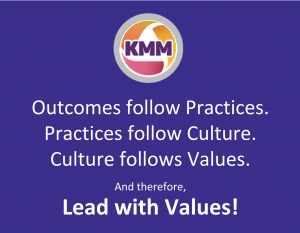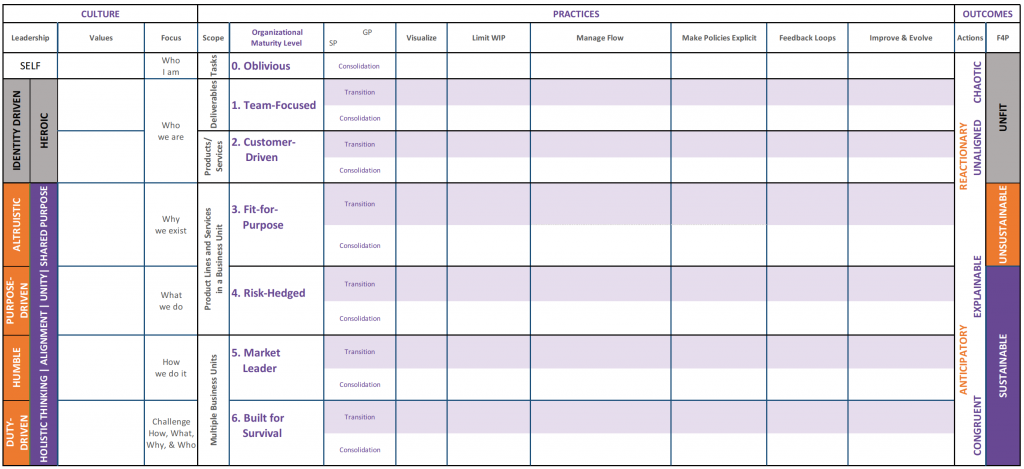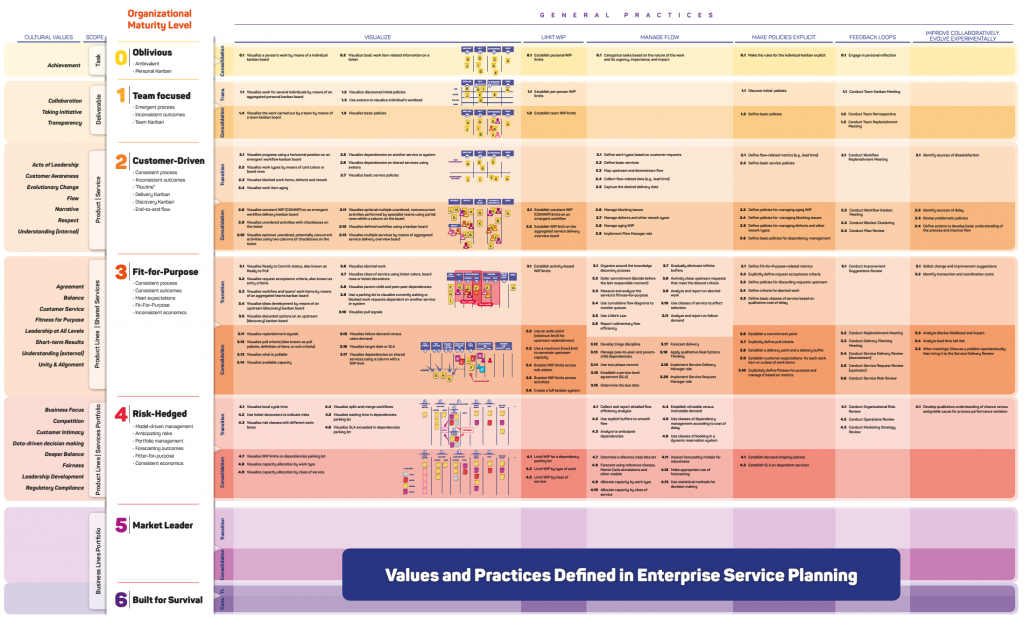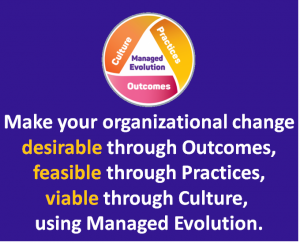Developing the desired culture of your company and achieving greater business outcome requires actions, effective actions. Therefore, we lead organizational change with values and we apply appropriate Kanban practices to make culture stay and demonstrate higher customer satisfaction.
Developing the desired culture of your company and achieving greater business outcome requires actions, effective actions.
Therefore, we lead organizational change with values and we apply appropriate Kanban practices to make culture stay and demonstrate higher customer satisfaction.

It is important to select practices that are appropriate for the actual organizational maturity and way of thinking and behaving. See the KMM Overview poster to get an overall understanding of the seven maturity levels.
There are organizations in which managers make decisions, assign tasks to workers, and monitor their execution personally. People do their best individually or in teams to complete the requested work and cope with the frequently changing priorities. In such a situation visualizing individual’s work and collaborating whenever necessary helps the team to meet deadlines and customer expectations. The business outcomes, however, depend entirely on the knowledge, skills, and attitudes of the people who take part in it.
In other organizations, managers communicate the objectives for the business and involve the employees in defining the appropriate approaches for achieving them. The practices that work effectively in similar situations include defining shared policies and using different means to provide visibility into the entire process of developing and delivering a product or service, including workflow-related data and on-time feedback to customers and other stakeholders. As a consequence, the business outcomes are consistent and predictable. In addition, the entire organization is able to adapt quickly to changes in their business context—and might even be able to anticipate them.
The relationships between culture attributes, Kanban practices and business outcomes are reflected in the architecture of the Kanban Maturity Model (KMM):

Each of the general Kanban practices can be implemented with one or more specific practices. The specific practices are derived from patterns observed in the field and are associated with organizations exhibiting the behaviors and outcomes associated with the corresponding maturity level.
Therefore, to avoid overreaching and resistance, selecting the appropriate specific practices should take into account the actual organization’s maturity.
In addition, to ensure a smooth evolution for an organization, the specific practices at maturity levels 1 through 6 are organized into two broad groupings:
• Transition practices
• Consolidation practices
The transition and consolidation practices together codify the mechanisms for successful evolution in alignment with the Evolutionary Change Model, illustrated on our Evolutionary Change poster. Using the Managed Evolution approach reduces the negative social impact, the organizational risk, and the psychological resistance to changes and adoption of new ways of working
Transition practices serve to stress the organization just enough – as much as to lead to reflection and realization that the current state still can be improved. When an organization aspires to achieve the outcomes that characterize the next level of maturity, it can add transition practices to facilitate that. So long as the intent and the will to achieve the next level of depth in maturity are present, adopting and implementing these practices should meet with little or no resistance.
Consolidation practices are practices that are necessary to achieve the outcomes that define a maturity level. An organization at a lower level tends to resist or repel them unless some preparatory work is done first. More precisely, introducing (or pushing) the Transition practices causes the organization to evolve further and, therefore, pull and implement the Consolidation practices.
The Practice Map poster illustrates all specific practices and values mapped to the 7 maturity levels.

How to use the Practice Map poster and the model?
The poster only illustrates the mapping of the practices and values to the maturity levels. You will find the implementation guidelines for each practice in the book. Nevertheless, this poster gives you enough overall guidance about how to approach a particular situation.
For example, let’s assume that you are in an organization that has trained their teams in managing their teamwork with simple kanban boards. Team members find that they organize themselves well, however, the work between the teams is not coordinated; they always receive late the input they need from the other teams and therefore, they have to work late hours to compensate the caused delay. Managers admit that often the project or service would not be delivered on time without the heroic effort of some teams or individuals. Customers complain that product or service delivery is not reliable, frequently delayed and with some defects.
In such a situation, maturity level 1 organization, you might find appropriate the guidance for developing culture and better customer awareness and satisfaction through the practices of maturity level 2:

Lead the organization’s evolution with values such as customer awareness, respect, flow (from ML2), customer service, fitness-for-purpose and unity&alignment (from ML3).
Introduce practices related to mapping the end-to-end flow (upstream and downstream), defining basic services and work types, visualizing blocked work items, dependencies on another service or system, work item aging and basic service policies, define and use flow-related metrics and extend the team-level meetings with a workflow replenishment meeting.
Apply these practices some reasonable time, observe changes in business outcomes, reflect and take decisions about how to proceed.



